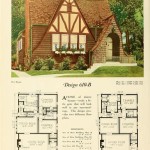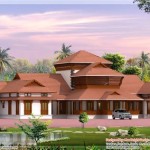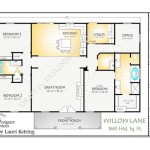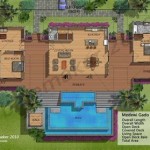A house plan with a mother-in-law apartment, also known as an in-law suite or granny flat, is a type of residential design that incorporates a separate living space within a single-family home. This self-contained unit is designed to provide independent and comfortable accommodation for an elderly parent, family member, or guest.
In-law apartments typically feature a bedroom, bathroom, kitchenette, and living area. They may also include amenities such as laundry facilities, a private entrance, and access to the main house or backyard. These units offer the benefits of independent living while maintaining close proximity to loved ones and providing additional support as needed.
Transition Paragraph: As the population ages and multigenerational living becomes more common, house plans with mother-in-law apartments have gained popularity. They offer a flexible and practical solution for families looking to accommodate their loved ones while maintaining their own privacy and space. In the following sections, we will explore the key considerations, design options, and benefits of incorporating a mother-in-law apartment into your home plan.
Here are 10 important points to consider when designing a house plan with a mother-in-law apartment:
- Separate entrance
- Private bathroom
- Kitchenette or full kitchen
- Living area
- Accessibility features
- Proximity to main house
- Privacy for both parties
- Cost and maintenance
- Resale value
- Local building codes
By carefully considering these factors, you can create a house plan with a mother-in-law apartment that meets the needs of your family and provides a comfortable and supportive living environment for all.
Separate entrance
A separate entrance for the mother-in-law apartment is crucial for maintaining privacy and independence for both parties. It allows the occupants of the apartment to come and go as they please without having to go through the main house. This is especially important for elderly parents or family members who may need assistance or have limited mobility.
- Convenience: A separate entrance makes it easy for the occupants of the apartment to access the outdoors, go for walks, or run errands without having to interact with the main house.
- Privacy: A separate entrance ensures that the occupants of the apartment have their own private space and can come and go without disturbing the main house.
- Safety: A separate entrance can provide an added layer of security for the occupants of the apartment, especially if they are elderly or have limited mobility.
- Resale value: A separate entrance can increase the resale value of your home, as it makes the mother-in-law apartment more appealing to potential buyers.
When designing a separate entrance for a mother-in-law apartment, it is important to consider the following factors:
- Location: The entrance should be located in a convenient and accessible location, but also in a way that provides privacy for both parties.
- Accessibility: The entrance should be accessible for all occupants, including those with limited mobility.
- Security: The entrance should be secure and well-lit.
- Privacy: The entrance should be designed to provide privacy for both the occupants of the apartment and the main house.
Private bathroom
A private bathroom is an essential feature of any mother-in-law apartment. It provides the occupants of the apartment with a private and convenient space to bathe, shower, and use the toilet. This is especially important for elderly parents or family members who may need assistance or have limited mobility.
When designing a private bathroom for a mother-in-law apartment, it is important to consider the following factors:
- Accessibility: The bathroom should be accessible for all occupants, including those with limited mobility. This means that the bathroom should be wide enough to accommodate a wheelchair or walker, and the shower should be curbless or have a low threshold.
- Safety: The bathroom should be safe for all occupants. This means that the bathroom should have grab bars in the shower and toilet area, and the floor should be slip-resistant.
- Privacy: The bathroom should provide privacy for the occupants of the apartment. This means that the bathroom should have a door that can be locked, and the window should be obscured or covered with a blind.
- Convenience: The bathroom should be conveniently located for the occupants of the apartment. This means that the bathroom should be located near the bedroom and living area.
In addition to the above factors, it is also important to consider the size and layout of the bathroom. The bathroom should be large enough to accommodate all of the necessary fixtures and amenities, but it should not be so large that it is difficult to clean and maintain.
The layout of the bathroom should be designed to maximize space and efficiency. The toilet and sink should be located near the door, and the shower should be located in the back of the bathroom. This layout will make it easy for occupants to use the bathroom, even if they have limited mobility.
By carefully considering all of these factors, you can create a private bathroom for your mother-in-law apartment that is safe, convenient, and comfortable.
Kitchenette or full kitchen
The type of kitchen you choose for your mother-in-law apartment will depend on a number of factors, including the size of the apartment, the needs of the occupants, and your budget.
A kitchenette is a small, compact kitchen that typically includes a sink, a small refrigerator, a microwave, and a few basic appliances. Kitchenettes are ideal for small apartments or for occupants who do not cook frequently. However, kitchenettes may not be suitable for occupants who need to prepare complex meals or who have special dietary needs.
A full kitchen is a larger, more complete kitchen that includes a stove, oven, refrigerator, dishwasher, and other appliances. Full kitchens are ideal for occupants who cook frequently or who have special dietary needs. However, full kitchens require more space and are more expensive to install and maintain than kitchenettes.
When deciding between a kitchenette and a full kitchen, it is important to consider the following factors:
- Size of the apartment: A kitchenette is a better option for small apartments, as it takes up less space. A full kitchen is a better option for larger apartments, as it provides more space for cooking and storage.
- Needs of the occupants: If the occupants of the apartment do not cook frequently or have special dietary needs, a kitchenette may be sufficient. If the occupants cook frequently or have special dietary needs, a full kitchen is a better option.
- Budget: Kitchenettes are less expensive to install and maintain than full kitchens. If you are on a tight budget, a kitchenette may be a better option.
Ultimately, the decision of whether to include a kitchenette or a full kitchen in your mother-in-law apartment is a personal one. By carefully considering the factors discussed above, you can make the best decision for your needs and budget.
Living area
The living area in a mother-in-law apartment is an important space for relaxation, entertainment, and socializing. It should be designed to be comfortable, inviting, and functional for the occupants of the apartment.
- Size and layout: The living area should be large enough to accommodate the occupants’ needs and furniture, but it should not be so large that it is difficult to heat and cool. The layout of the living area should be designed to maximize space and efficiency.
- Furniture: The furniture in the living area should be comfortable and supportive. It should also be scaled to the size of the room. Avoid overcrowding the living area with too much furniture.
- Lighting: The living area should have a combination of natural and artificial light. Natural light can be provided by windows and skylights. Artificial light can be provided by overhead lights, lamps, and sconces.
- Decor: The decor of the living area should reflect the occupants’ personal style. It should also be cohesive with the overall design of the mother-in-law apartment.
By carefully considering all of these factors, you can create a living area in your mother-in-law apartment that is comfortable, inviting, and functional for the occupants.
Accessibility features
Accessibility features are important considerations for any home, but they are especially important for mother-in-law apartments. These features can help to ensure that the apartment is safe and comfortable for occupants of all ages and abilities.
One important accessibility feature is a zero-step entry. This means that there is no step or threshold to enter the apartment. This can be especially important for occupants who use wheelchairs or walkers.
Another important accessibility feature is wide doorways. Wide doorways allow for easy access for wheelchairs and other mobility devices. They also make it easier for occupants to move around the apartment safely.
Grab bars are another important accessibility feature. Grab bars can be installed in the bathroom, shower, and other areas of the apartment to provide support and stability for occupants.
In addition to these specific accessibility features, it is also important to consider the overall design of the apartment. The apartment should be well-lit and have a clear and easy-to-navigate layout. This will help to ensure that occupants can move around the apartment safely and independently.
By carefully considering accessibility features, you can create a mother-in-law apartment that is safe, comfortable, and accessible for all occupants.
Proximity to main house
The proximity of the mother-in-law apartment to the main house is an important consideration. The ideal proximity will vary depending on the needs of the occupants and the layout of the property. However, there are some general factors to keep in mind.
One important factor is the level of independence desired by the occupants of the mother-in-law apartment. If the occupants want to be able to live independently, the apartment should be located a short distance from the main house. This will allow them to come and go as they please without having to rely on the assistance of others.
Another important factor to consider is the level of interaction desired between the occupants of the mother-in-law apartment and the main house. If the occupants want to be close to family and friends, the apartment should be located near the main house. This will allow them to easily participate in family activities and socialize with others.
Finally, the layout of the property should also be taken into consideration when determining the proximity of the mother-in-law apartment to the main house. If the property is large, the apartment may be located a further distance from the main house. However, if the property is small, the apartment may need to be located closer to the main house in order to maximize space.
By carefully considering all of these factors, you can determine the ideal proximity of the mother-in-law apartment to the main house.
Privacy for both parties
Privacy is an important consideration for both the occupants of the mother-in-law apartment and the occupants of the main house. The following are some tips for ensuring privacy for both parties:
- Separate entrances: One of the best ways to ensure privacy for both parties is to have separate entrances for the mother-in-law apartment and the main house. This will allow the occupants of each space to come and go without having to go through the other space.
- Separate living areas: The mother-in-law apartment should have its own living area, separate from the living area of the main house. This will give the occupants of the apartment a private space to relax and entertain guests.
- Separate bedrooms: The mother-in-law apartment should also have its own bedroom, separate from the bedrooms in the main house. This will give the occupants of the apartment a private space to sleep and rest.
- Separate bathrooms: The mother-in-law apartment should have its own bathroom, separate from the bathrooms in the main house. This will give the occupants of the apartment a private space to bathe and use the toilet.
By following these tips, you can help to ensure privacy for both the occupants of the mother-in-law apartment and the occupants of the main house.
In addition to the physical separation of the two spaces, it is also important to respect the privacy of the occupants of each space. This means knocking before entering, respecting quiet hours, and avoiding snooping or eavesdropping.
By following these simple tips, you can help to create a harmonious and respectful living environment for all.
Cost and maintenance
The cost of building a mother-in-law apartment will vary depending on a number of factors, including the size of the apartment, the materials used, and the complexity of the design. However, as a general rule of thumb, you can expect to pay between $100,000 and $200,000 to build a mother-in-law apartment.
In addition to the initial cost of construction, you will also need to factor in the cost of ongoing maintenance. This includes the cost of utilities, repairs, and insurance. The cost of maintenance will vary depending on the size and age of the apartment, as well as the local climate.
Here is a more detailed breakdown of the costs associated with building and maintaining a mother-in-law apartment:
- Construction costs: The cost of construction will vary depending on the size of the apartment, the materials used, and the complexity of the design. However, as a general rule of thumb, you can expect to pay between $100,000 and $200,000 to build a mother-in-law apartment.
- Maintenance costs: The cost of maintenance will vary depending on the size and age of the apartment, as well as the local climate. However, as a general rule of thumb, you can expect to pay between $1,000 and $2,000 per year to maintain a mother-in-law apartment.
- Utilities: The cost of utilities will vary depending on the size of the apartment and the local climate. However, as a general rule of thumb, you can expect to pay between $100 and $200 per month for utilities.
- Repairs: The cost of repairs will vary depending on the nature of the repairs. However, as a general rule of thumb, you can expect to pay between $500 and $1,000 per year for repairs.
- Insurance: The cost of insurance will vary depending on the size and age of the apartment, as well as the local climate. However, as a general rule of thumb, you can expect to pay between $500 and $1,000 per year for insurance.
By carefully considering all of these costs, you can budget for the construction and maintenance of a mother-in-law apartment.
Resale value
The resale value of a house with a mother-in-law apartment can be higher than the resale value of a similar house without a mother-in-law apartment. This is because mother-in-law apartments are in high demand, especially among families with elderly parents or other relatives who need assistance or additional space.
- Increased demand: Mother-in-law apartments are in high demand, which can lead to a higher resale value. This is because there is a growing number of elderly people who need assistance or additional space, and mother-in-law apartments provide a convenient and affordable solution.
- Multi-generational living: Mother-in-law apartments can also appeal to families who want to live together multi-generationally. This can be a great way for families to save money and provide support for each other.
- Rental income: If you decide not to use the mother-in-law apartment yourself, you can rent it out to tenants. This can provide you with additional income to help offset the cost of the mortgage or property taxes.
- Marketability: A house with a mother-in-law apartment is more marketable than a similar house without a mother-in-law apartment. This is because mother-in-law apartments appeal to a wider range of buyers, including families with elderly parents, families who want to live multi-generationally, and investors who are looking for rental properties.
Overall, the resale value of a house with a mother-in-law apartment is higher than the resale value of a similar house without a mother-in-law apartment. This is because mother-in-law apartments are in high demand, provide a convenient and affordable solution for families with elderly parents or other relatives who need assistance or additional space, and can be rented out to tenants for additional income.
Local building codes
Local building codes are regulations that govern the construction of buildings and other structures. These codes are in place to ensure that buildings are safe, habitable, and meet certain minimum standards. When designing a house plan with a mother-in-law apartment, it is important to be aware of the local building codes that apply to your area.
- Zoning restrictions: Zoning restrictions are regulations that determine what types of buildings can be built in a particular area. These restrictions are typically based on the land use plan for the area. Before you start designing your house plan, it is important to check the zoning restrictions for your property to make sure that you are allowed to build a mother-in-law apartment.
- Building codes: Building codes are regulations that govern the construction of buildings. These codes cover a wide range of topics, including structural requirements, fire safety, and energy efficiency. When designing your house plan, you need to make sure that the plans comply with the building codes for your area.
- Permit requirements: Most cities and towns require you to obtain a permit before you can start construction on a new building or addition. The permit process typically involves submitting your house plans to the local building department for review. The building department will review your plans to make sure that they comply with the local building codes.
- Inspections: Once you have obtained a permit, the local building department will typically require you to have your work inspected at various stages of construction. These inspections are done to ensure that your work is being done in accordance with the approved plans and that the building is being built to code.
Failure to comply with local building codes can result in delays in construction, fines, or even the requirement to demolish the building. It is important to work with a qualified architect or contractor who is familiar with the local building codes to ensure that your house plan complies with all applicable regulations.










Related Posts








